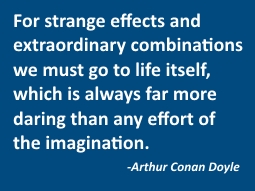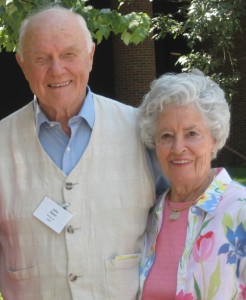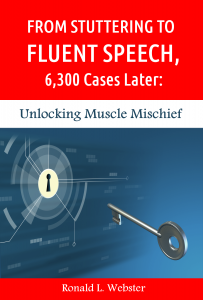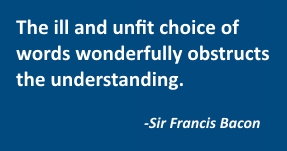
Stuttering expert and clinical psychologist Ronald L. Webster, Ph.D., president of Hollins Communications Research Institute (HCRI), has written a compelling book about stuttering that dispels the myths that surround the disorder and its treatment.
In his book, From Stuttering to Fluent Speech, 6,300 Cases Later: Unlocking Muscle Mischief, Dr, Webster provides new insights into stuttering from a scientific perspective. As the chapters unfold, he reveals how his advanced behavioral therapy system has helped thousands acquire the ability to control their stuttering and sustain fluent speech.
CHAPTER 6 EXCERPT
Biological Foundations of Stuttering
I have come to understand that stuttering, per se, is not the problem; anomalous muscle contractions that yield distorted speech-organ movements represent the crux of the matter.
 Disfluencies and subsequent personal reactions to stuttering are driven by the earlier-appearing disturbed motor events and incorrect vocal-tract shapes. The visibility of disfluencies and the strong personal impact they have upon the individual can serve as persistent forces that divert our attention from more fundamental aspects of the disorder.
Disfluencies and subsequent personal reactions to stuttering are driven by the earlier-appearing disturbed motor events and incorrect vocal-tract shapes. The visibility of disfluencies and the strong personal impact they have upon the individual can serve as persistent forces that divert our attention from more fundamental aspects of the disorder.
Our verbal communication system is a distinctive human feature, uniquely grounded in our anatomy, physiology, and behavior. The pervasive appearance of stuttering in peoples around the globe suggests that this problem was present within our species at least sixty thousand years ago.
Stuttering spread throughout the world as peoples migrated, developed distinctive languages, and experienced changes in their physical features through the forces of evolution. Stuttering has probably ridden along with human evolution because of our species’ specialized biological form and function.
Incidence and Prevalence of Stuttering
The common patterns in the incidence and prevalence of stuttering flow from its biological basis. When we refer to the incidence of stuttering we are calling attention to how many people have stuttered at some point in their lives. Prevalence, however, refers to how many people are stuttering at a particular moment in time. Thus, the incidence of stuttering is approximately 5 percent, with most of the cases reporting that their stuttering occurred during their preschool years (Andrews and Harris, 1964; Manson, 2000).
In the adult population, stuttering has a prevalence of approximately 1 percent, with slight evidence that the actual value may be a bit smaller at about .73 percent (Craig, A., Hancock, Craig. M, and Peters, 2002). An important study of 3,404 school-age children presented data showing a prevalence of 2.43 percent (Proctor, Duff, and Yairi, 2002; Yairi and Ambrose, 2005). There were no differences noted in prevalence across ethnic groups in this same study.
One of the fascinating aspects of stuttering is that…
[end of excerpt from Chapter 6]
 For more information about From Stuttering to Fluent Speech, 6,300 Cases Later: Unlocking Muscle Mischief, visit Amazon.com.
For more information about From Stuttering to Fluent Speech, 6,300 Cases Later: Unlocking Muscle Mischief, visit Amazon.com.
To learn more about HCRI stuttering therapy, click here: www.stuttering.org.


.jpg)
 Stuttering is one of the most misunderstood and mistreated of human disorders. In his book,
Stuttering is one of the most misunderstood and mistreated of human disorders. In his book, 


 I believe that much of the work that has been done on stuttering also involves major problems with words. I am not referring here to the fact that the stutterer has problems in his or her production of words.
I believe that much of the work that has been done on stuttering also involves major problems with words. I am not referring here to the fact that the stutterer has problems in his or her production of words.

